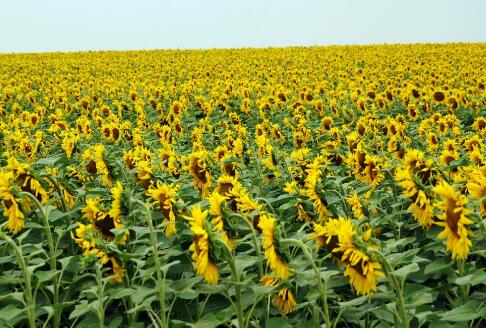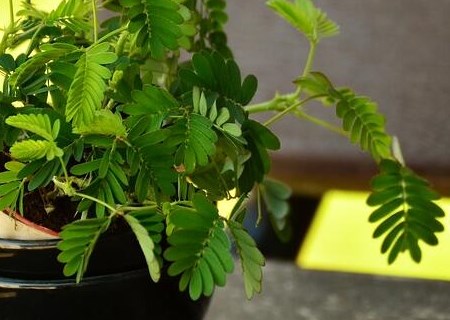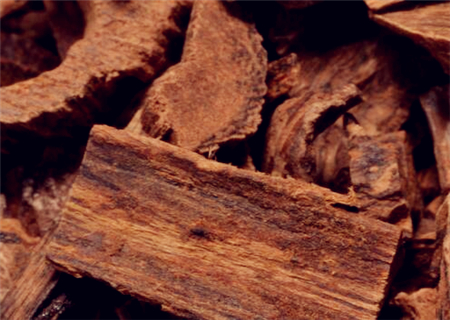When will the sunflowers of "oil crops" be sown? How long does it take from sowing to flowering? An introduction to planting methods is attached
Sunflower can not only be cultivated into flowers, but also can extract oil. It is an important oil crop in China. It has very high planting value and is cultivated in all parts of our country. When will the sunflowers sow? How long does it take from sowing to flowering?

Usually, sunflowers are sown in April, flowering from July to August, and seed maturity from August to September. In fact, sunflowers can blossom all the year round, and the secret is "accumulated temperature". That is, in the process of plant growth, as long as a certain temperature is accumulated, the plant can blossom.
It usually takes 6-9 days for a disk to open from a ligulate flower to a tubular flower. The inflorescence is in full bloom from the second day to the fifth day. The number of flowers in these four days accounted for about 75% of the number of flowers. Most of the flowers bloom from 4 to 6 o'clock in the morning, and the next morning they are pollinated and fertilized. Unfertilized branches can remain intact for 7 or 10 days. The seed setting rate of self-pollination of sunflower is very low, only about 3%, while the seed setting rate of cross-pollination is high.
Sunflower is one of the four major oil crops in the world, which was introduced into China since the Ming Dynasty. The main producing areas of sunflowers in China are distributed in Northeast, Northwest and North China, such as Inner Mongolia, Jilin, Liaoning, Heilongjiang, Shanxi and other provinces and autonomous regions. The main producing areas are between 35 °and 55 °north latitude. The average latitude difference is 1 °and the temperature difference is 1.5 ℃. Sunflower has great production potential and can be expanded to southwest, south-central and eastern China.
Planting methods of sunflower
I. selection of land and land preparation
The cultivation of sunflower should choose the land with flat land, medium fertility, convenient irrigation and drainage and relatively low soil viscosity, and should not be replanted. Reproduce in the way of seeds, and peat soil is suitable for sowing. Seed dressing with new high-fat membrane before sowing can ward off underground pests, isolate virus infection and improve seed germination rate.
Second, sowing seeds at the right time
The sowing time of sunflower is generally from March to April, and the suitable temperature for sowing is 18-25 ℃. It usually sprouts about 5-7 days after sowing. The basic principle of sowing date selection is to sow early or late appropriately according to the occurrence law of saline-alkali, so that the seedlings can avoid the harm of saline-alkali. Spring sowing or summer sowing according to the growth period of the variety.
Third, inspect the fields to replenish seedlings
Sunflower is a dicotyledonous crop, it is difficult to grow seedlings on the top soil, coupled with soil preparation, sowing quality is not high, or rain topsoil hardening after sowing, or diseases, insects, rats, finches and other damage, are easy to cause lack of seedlings and broken ridges. In order to ensure the whole seedling sowing, the field-by-line inspection must be carried out at the seedling emergence stage, and the missing seedlings should be replanted in time.
4. Determine the seedlings
Sunflower cultivation should be early to prevent seedling squeeze, affect the cultivation of strong seedlings, and even the future yield, as for saline-alkali land and pest-heavy plots, the seedling fixing time can be postponed appropriately. At the same time, sunflower seedlings should be determined as early as possible, which is conducive to the cultivation of strong seedlings and disk development, which should be carried out at 2 pairs of true leaves.
Fifth, ploughing and weeding
In general, sunflower intertillage plays the role of weeding and loosening soil, breaking consolidation, conserving water, reducing evaporation and reducing saline-alkali damage, etc., the first intertillage is carried out in 1-2 pairs of true leaves, the second intertillage is carried out one week after seedling setting, and the third intertillage is completed by ditching, soil cultivation and fertilization before ridge closure.
6. Trenching and manuring
Sunflowers prefer fertilizer, trench topdressing is usually carried out in the third intertillage, mainly nitrogen and phosphorus fertilizer, diammonium phosphate 5 kg per mu, urea 10 kg, mixed evenly and then applied to the soil. Trenching and soil cultivation can effectively ensure the growth and development of secondary roots, prevent lodging and reduce the basal branches below cotyledon nodes.
7. Timely irrigation
Sunflower irrigation uses furrow irrigation, the general plant height of 1.5 meters of varieties, head water should be carried out in the flower bud stage, Ershui in the early flowering stage, Sanshui in the filling stage. For the varieties with a plant height of about 2 meters, the head water was carried out 4-5 days before flowering (severe drought and irrigation in advance), the second water was 6-7 days after the head water, and the three water was in the filling stage.
8. Pollination management
The seed setting rate of self-pollination of sunflower is low, and the seed setting rate of cross-pollination is high. During cultivation, artificial pollination should be carried out in time, pollination should be carried out by means of disk, powder flapping seed, cotton thread glove and so on, or the pollen of the male parent should be collected and gently smeared on the stigma of the female parent with a small brush, and pollination should be carried out for 3 or 4 times in full bloom.
Why do sunflowers always face the sun?
The following is a description of the bioscientific analysis of the causes of sunflower exposure:
It is true that the sunflower is sunny during the period from germination to before the disk blossoms. Its leaves and disk follow the sun from east to west during the day, but not immediately. Botanists have measured that the disk points about 12 degrees behind the sun, that is, 48 minutes. After the sun went down, the sunflower disk slowly swung back, and at about 3 o'clock in the morning, facing east to wait for the sun to rise.
Under the irradiation of sunlight, the content of auxin on the backlight side of the sunflower increases, which stimulates the cells on the backlight side to rotate toward the sun. After sunset, auxin is redistributed, causing the sunflower to return to the east.
After the disk is in full bloom, it no longer rotates to the sun, but is fixed to the east. Sunflower pollen is afraid of high temperatures, and if the temperature is higher than 30 ℃, it will be burned, so fixed to the east, you can avoid the direct sunlight at noon and reduce the amount of radiation. However, when the disk is exposed to the sun in the morning, it helps to dry the dew condensed at night, reducing the possibility of mold attack; in addition, the lower temperature in the morning makes the sunflower disk into a warm nest, which can attract insects to help pollinate.
Sunflower receptacle auxin backlight distribution, so the backlight side of the stem grows faster, the stem will bend to the light source.
Sunflower gets its name because the young disk at the top of the young plant in the early growth stage and the young disk in the middle stage rotates obviously with the sun. It is believed that sunflower sunrise is only related to light irradiation, and it is also closely related to gravity.
Time: 2019-03-18 Click:
- Prev

What are the shy ways to plant mimosa seeds? What are the functions of them? Is the root good for the human body?
The flowers, leaves and pods of mimosa have good ornamental effect, which is suitable for potted flowers in balcony and indoor. It can also be planted in the courtyard and other places. So what are the planting methods of mimosa seeds? What are the functions of them? Is the root good for the human body? Mimosa is different from other plants.
- Next

How much is the price of the diamond in the plant worth one gram? How many years does it take to plant to produce fragrance? Artificially planted several
Shen Xiang, the name of traditional Chinese medicine. The main producing areas are Guangdong, Hainan, Guangxi, Fujian and other places. Known as the diamond in plants, it is worth a lot of money. So how much is the price of incense worth per gram? How many years does it take to plant to produce fragrance? How many years of artificial cultivation can you make money? What is the price of Chen Xiang now? How much is a gram worth?
Related
- Fuxing push coffee new agricultural production and marketing class: lack of small-scale processing plants
- Jujube rice field leisure farm deep ploughing Yilan for five years to create a space for organic food and play
- Nongyu Farm-A trial of organic papaya for brave women with advanced technology
- Four points for attention in the prevention and control of diseases and insect pests of edible fungi
- How to add nutrient solution to Edible Fungi
- Is there any good way to control edible fungus mites?
- Open Inoculation Technology of Edible Fungi
- Is there any clever way to use fertilizer for edible fungus in winter?
- What agents are used to kill the pathogens of edible fungi in the mushroom shed?
- Rapid drying of Edible Fungi

